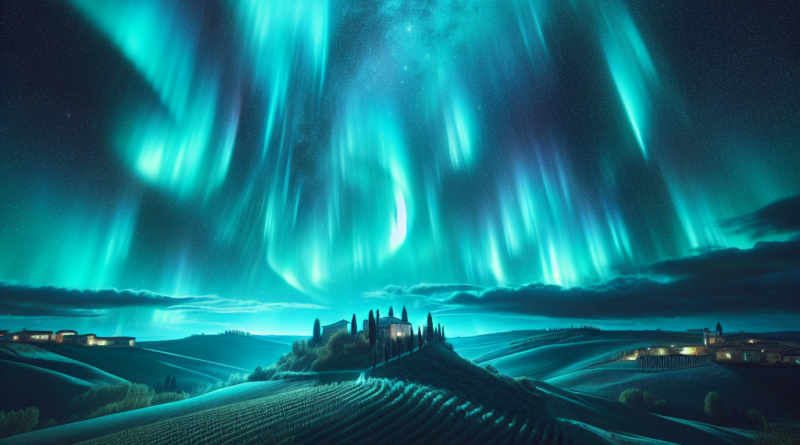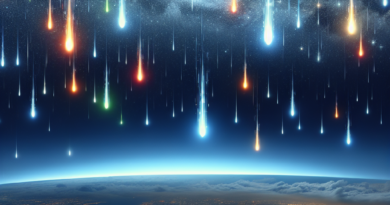Northern Lights Tonight May 12: Where to See Them in Italy – Map
The Rare Aurora Borealis Phenomenon Lights Up the Italian Sky
A Rare Sight in Italy
During the night between the 10th and 11th of May, Italy found itself gazing up at a rare spectacle in the sky.
The phenomenon in question was the Aurora Borealis, a natural light display typically seen only in polar regions, making its exceptional way to the Italian peninsula.
This extraordinary event, remarkable for its magnitude and intensity in Italy, captured the attention of millions who took to social media to share photos of the magenta-colored sky.
What is the Aurora Borealis?
The Aurora Borealis, also known as the “Northern Lights,” is a luminous phenomenon caused by the interaction between charged particles from the solar wind and the Earth’s magnetosphere.
This interaction produces a colorful illumination in the night sky, typically visible in northern regions.
This time, the spectacle reached as far as the Italian skies due to a geomagnetic storm disturbance of class G4, intensifying to G5.
When the solar particles met the Earth’s magnetic field around 7:00 pm, they created a gap in the magnetosphere, allowing the charged particles to reach our atmosphere.
Guided by the Earth’s magnetic field, the particles were directed towards the poles, where they interacted with oxygen at high altitudes, producing the green and red lights known as polar auroras.
Witnessing the Aurora Borealis in Italy
The Aurora Borealis was visible in various parts of Italy, with particularly intense displays in northern regions but reaching as far as cities like Sorrento, Ostuni, and Matera in the south.
Those who looked up to admire the celestial show shared their experiences on social media, showcasing impressive snapshots.
The NOAA recently published 4 alerts confirming the high possibility of elevated and extreme geomagnetic activity, hinting at a chance for the reddish lights to return to the sky tonight.
Where to See It in Italy: Keep Your Eyes Peeled
The unforgettable Aurora Borealis of May 11th will remain a remarkable event in the memories of millions of Italians.
Although more common in northern regions, this exceptional event allowed sightings even in southern Italy, from Turin to Matera, from Rome to the Romagna coast.
As experts suggest, it’s worth keeping an eye on the sky tonight as the spectacle could repeat itself.
The Power of the Solar Storm: Implications and Precautions
The stunning Aurora Borealis, or Stable Auroral Red Arc (SAR), was the result of intense solar activity.
Charged particles from the solar wind interacting with the Earth’s magnetosphere created an exceptionally intense aurora borealis.
Predicted by the US agency NOAA, the arrival of a geomagnetic storm of record intensity compared to the last 21 years was even underestimated, leading to a G5 event, the highest level of intensity.
Despite the fascinating celestial display, solar storms bring concerns.
Space weather forecasting is still imprecise, and storms of this intensity can damage satellites and interfere with power grids and navigation systems.
Elon Musk’s Starlink satellites have proven resilient under pressure, but precautions remain necessary in the face of such powerful geomagnetic events.




